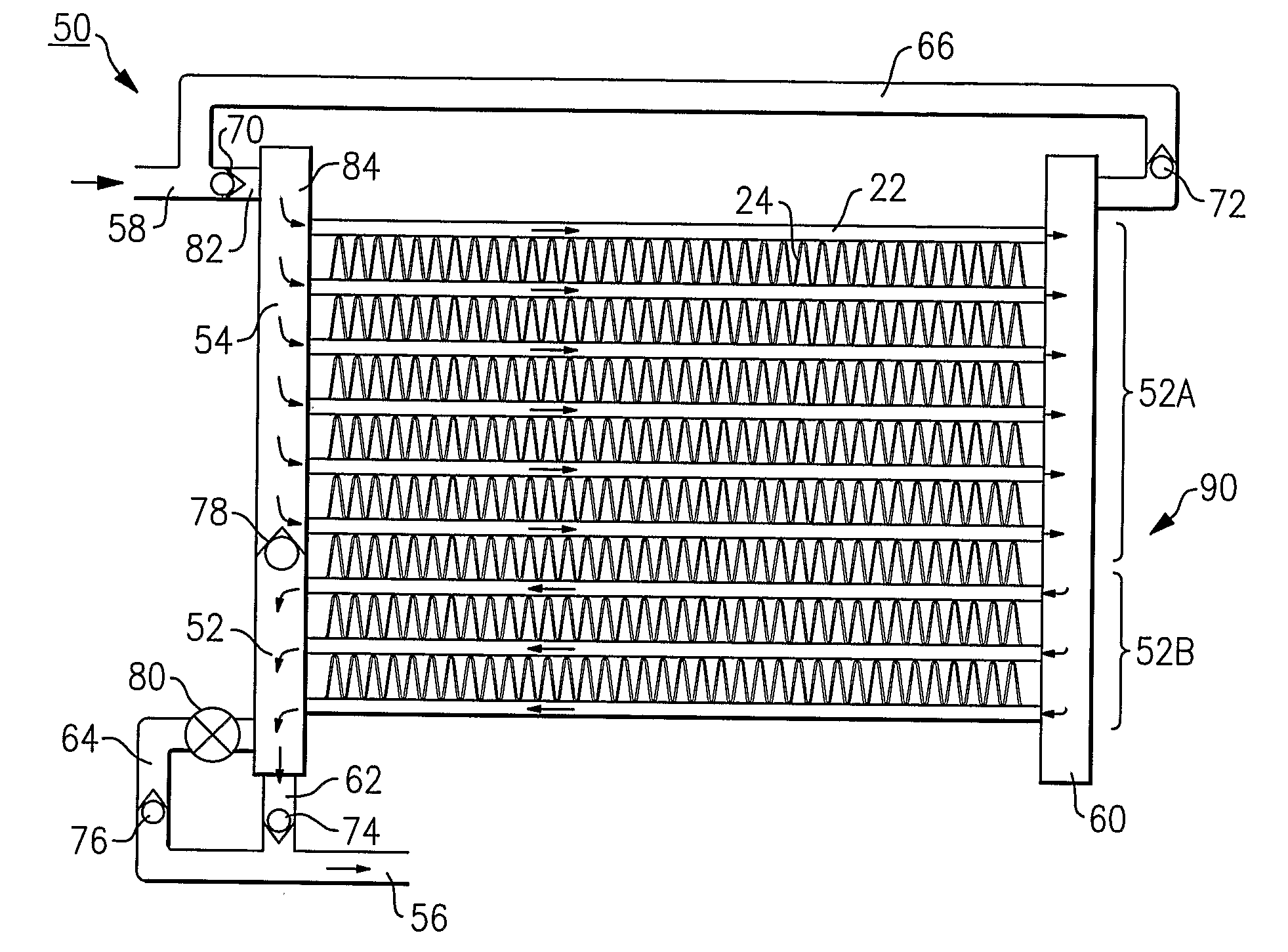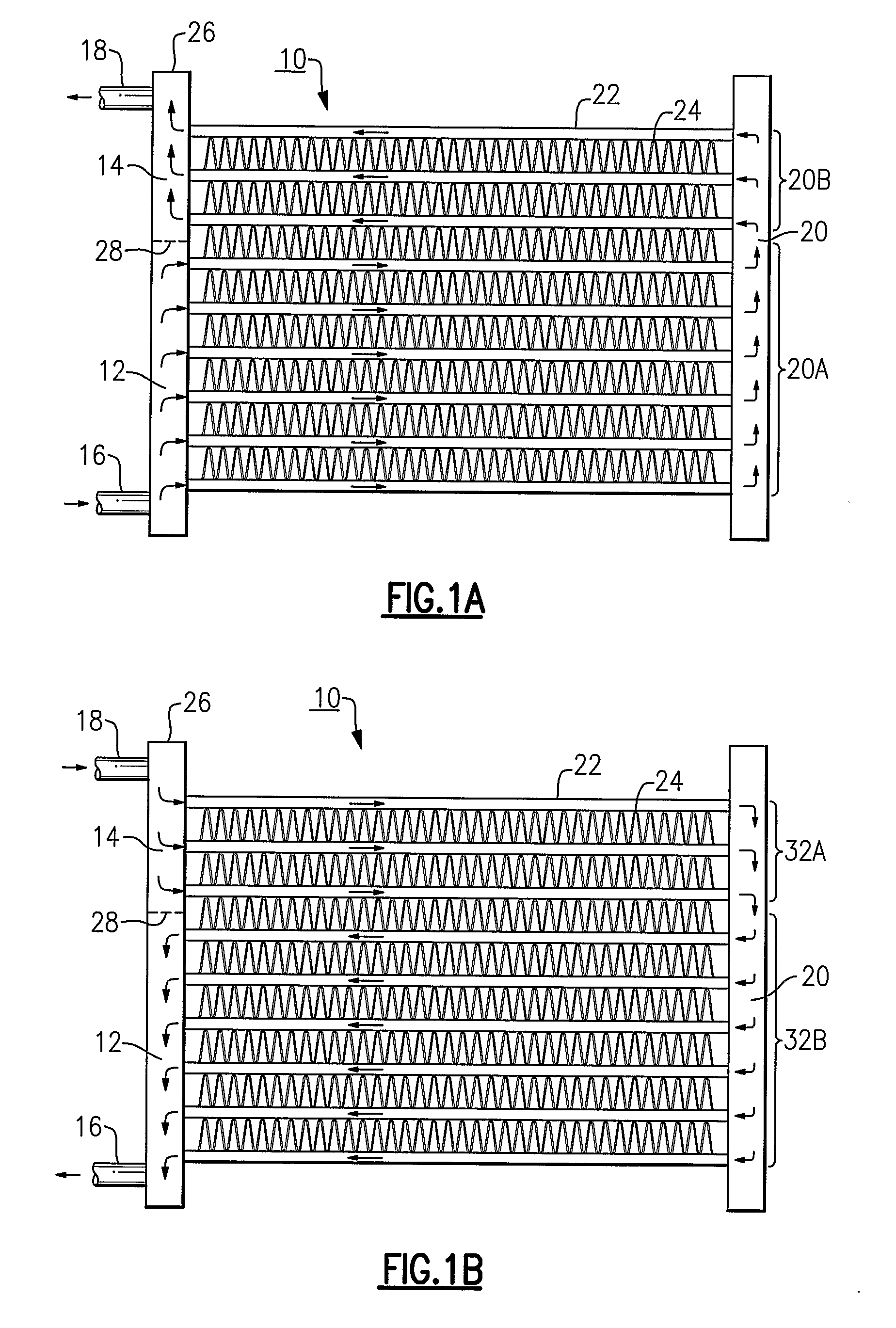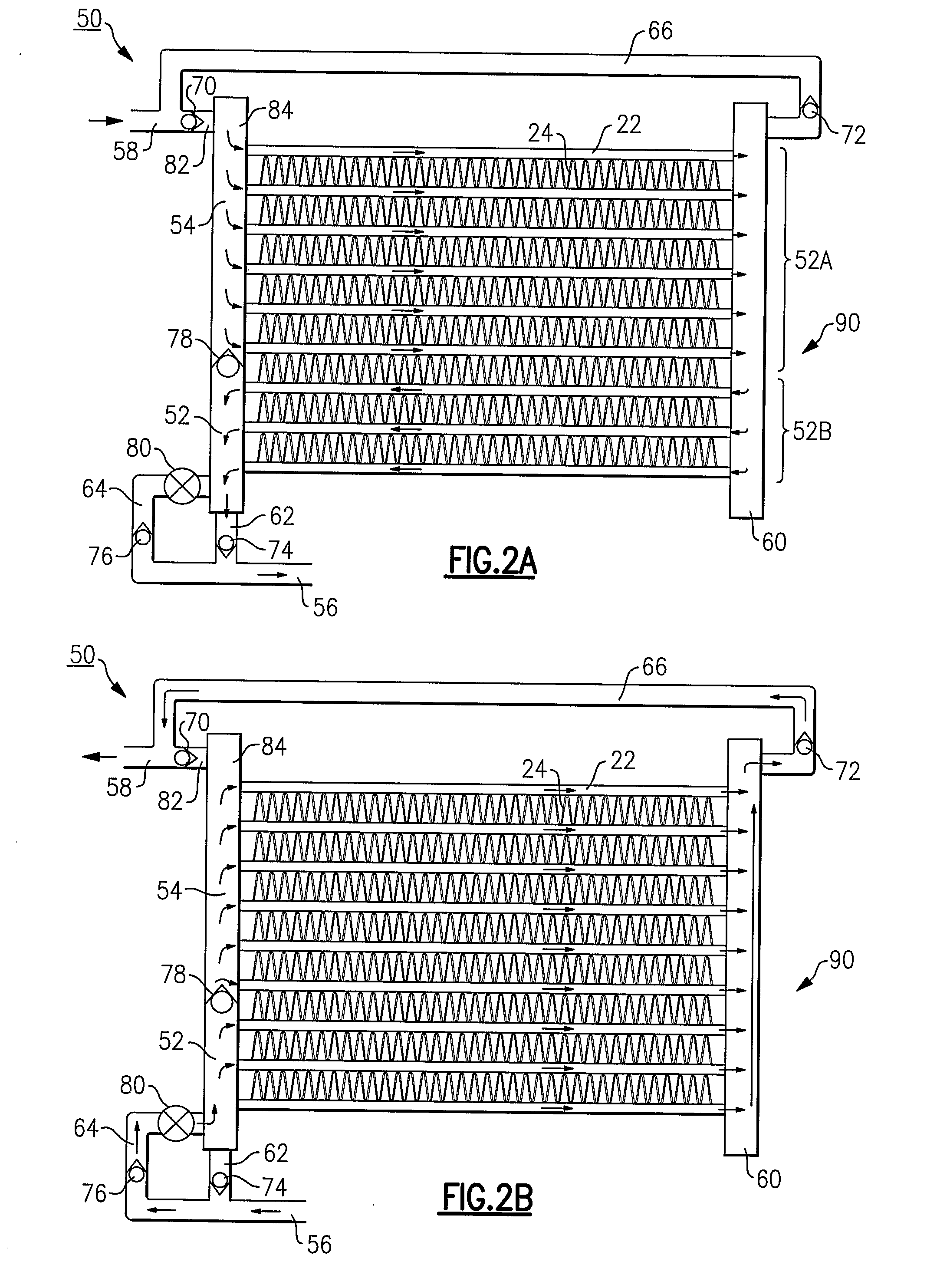Parallel Flow Heat Exchanger For Heat Pump Applications
a heat exchanger and parallel flow technology, applied in the field of refrigerant heat pump systems, can solve the problems of extreme limit of their application in the heat pump field, difficulty in achieving the effect of equal design, poor reliability, etc., to improve reliability, enhance heat pump system performance, and enhance performan
- Summary
- Abstract
- Description
- Claims
- Application Information
AI Technical Summary
Benefits of technology
Problems solved by technology
Method used
Image
Examples
Embodiment Construction
[0027]In the operation of a conventional parallel flow heat exchanger, refrigerant flows through the inlet opening and into the internal cavity of an inlet manifold. From the inlet manifold, the refrigerant, in a single-pass configuration, enters and passes through a series of parallel heat transfer tubes to the internal cavity of an outlet manifold. Externally to the tubes, air is circulated over the heat exchange tubes and associated airside fins by an air-moving device such as fan, so that heat transfer interaction occurs between the air flowing outside the heat transfer tubes and refrigerant inside the tubes. The heat exchange tubes can be hollow or have internal enhancements such as ribs for structural rigidity and heat transfer augmentation. These internal enhancements divide each heat exchange tube into multiple channels along which the refrigerant is flown in a parallel manner. The channels typically have circular, rectangular, triangular, trapezoidal or any other feasible c...
PUM
 Login to View More
Login to View More Abstract
Description
Claims
Application Information
 Login to View More
Login to View More - R&D
- Intellectual Property
- Life Sciences
- Materials
- Tech Scout
- Unparalleled Data Quality
- Higher Quality Content
- 60% Fewer Hallucinations
Browse by: Latest US Patents, China's latest patents, Technical Efficacy Thesaurus, Application Domain, Technology Topic, Popular Technical Reports.
© 2025 PatSnap. All rights reserved.Legal|Privacy policy|Modern Slavery Act Transparency Statement|Sitemap|About US| Contact US: help@patsnap.com



